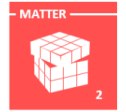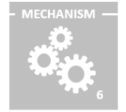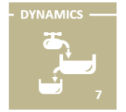The Industry Function
Definition
The Industry Function aims at integrating and maintaining valuable resources for the organization, to ensure a relevant infrastructure for the current business phase or for a future phase.
The value is integrated and maintained through the Industry Super-Process (VI&M: Value Integration & Maintenance).
To integrate and maintain value, the Industry Function is mostly based on the following 3 modes:
- 1- Building: having new resources to be used during the current or future phase
- 2- Improving: having better resources available for the business operations
- 3- Preserving: securing resources against risks and ensuring they last in time

Resources may be tangible, such as machines, stores, products to rent etc., or intangible, such as brand, intellectual property, knowledge or skills. Cash is not, as is, considered as par of "Resources" in the Bm2 framework.
The Industry Function is often ignored or neglected when considering the characteristics of a business. However, it is fundamental for the life and evolution of an organization in several ways:
- as a "defense" function, against internal or external threats,
- as an "autopoiesis" function, aiming at producing or reproducing the very elements it is made of,
- as a "growth" function, aiming at providing the necessary infrastructure to increase its activity,
- as a "mutation" function, aiming at preparing or supporting internal changes,
- as an "adaptation" function, aiming at reacting to external changes,
- as an "exploration" function, in addition to the traditional "exploitation" function.
Examples
Here are a few examples illustrating the different modes of the Industry Function:
1- Building:
- Intel regularly builds its major resources, the microprocessor designs, through its R&D process.
- Starbucks opens new shops around the world at very high pace, thus building new sales-enabling resources.
- Facebook's activity, the first years, was mainly focused on building its main resource: its user network base.
- Segway Inc. had to perform extensive marketing research to gain valuable knowledge about its new market.
- Universal Pictures produces movies constituting resources that will then be exploited.
2- Improving:
- Symantec Corporation continuously improves its Norton antivirus software by releasing new updates.
- Ford's methods department works on improving the production process, and therefore the production resources.
- McKinsey regularly improves its knowledge database by incorporating information from its consulting missions.
- GE's HR department organizes six-sigma trainings in order to improve the efficiency of its human resources.
3- Preserving:
- Samsung registers several thousands of patents every year to protect its technology.
- Nikon has insurance on its factories in case of flood, to protect its viability.
- ExxonMobil enforces Safety & Health processes to protect the workers on the drilling platforms.
- Coca-Cola's marketing department continuously works on preserving the value of its brand, its main resource.
- JP Morgan spends fortunes in wages for its traders to preserve this valuable human resource.
- Amazon has a database back-up special department that preserves its data.
Industry Function Strategy
The Industry Function focuses on the VI&M Super-Process (Value Integration & Maintenance). That may mean focusing on the VI&M Super-Process in terms of:
- Quantity of outputs: amount of resources integrated or maintained
- Quality of outputs: quality of resources integrated or quality of the maintance









